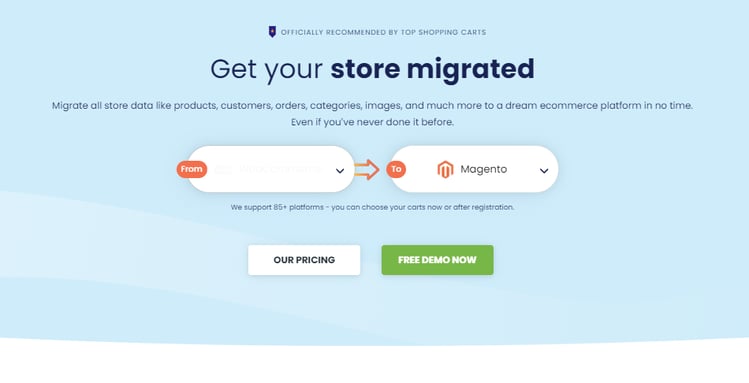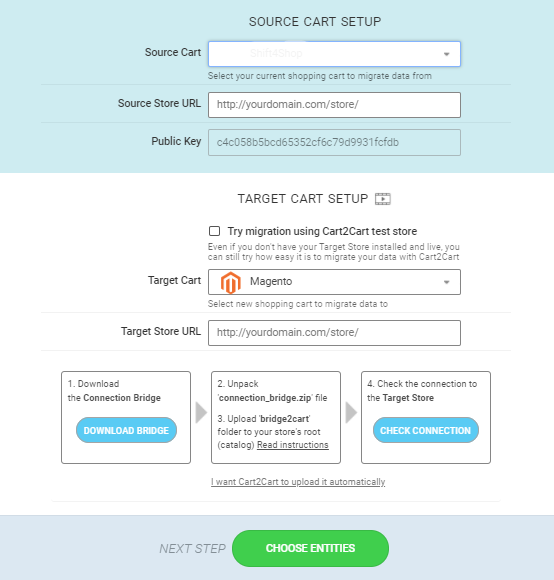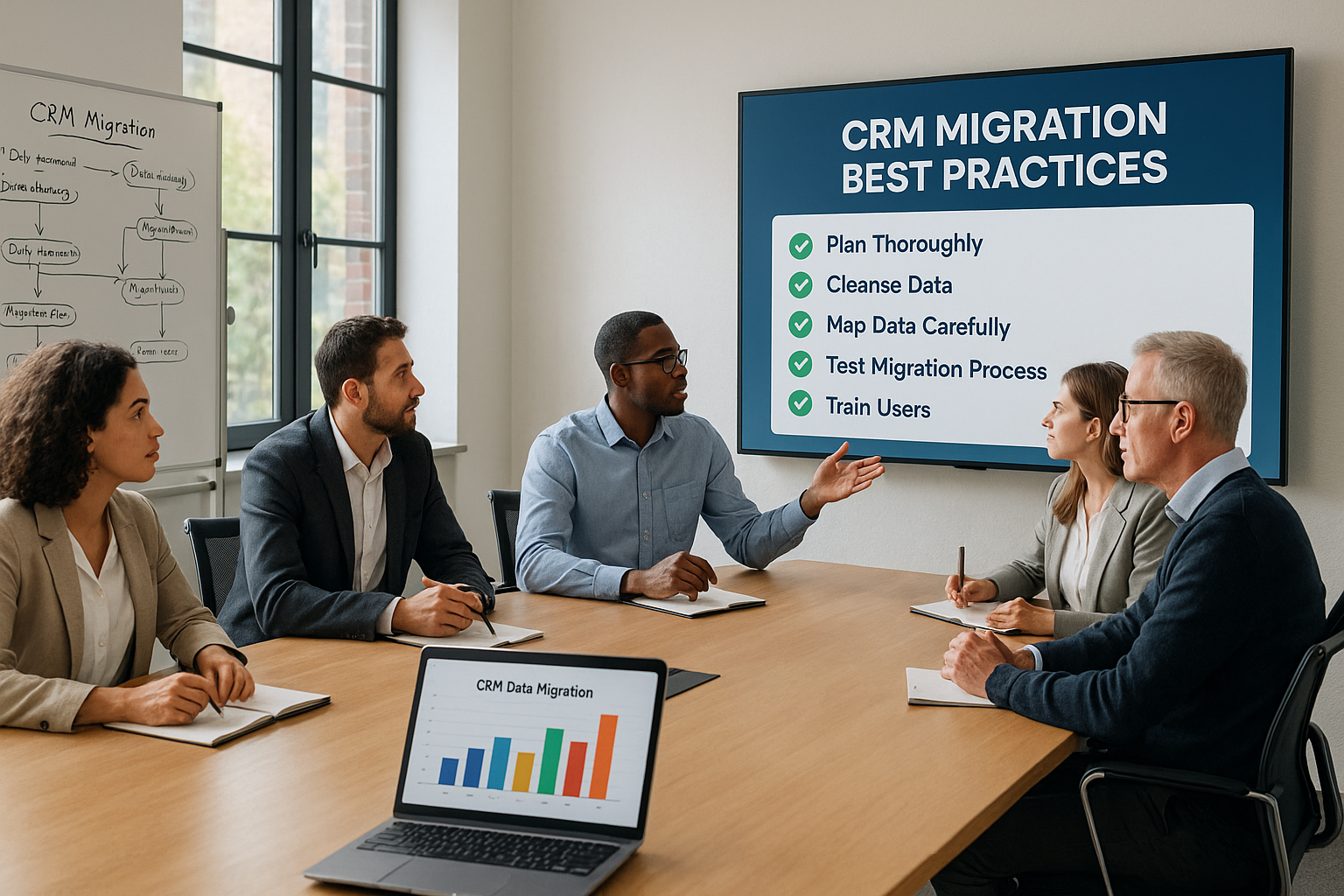Please read the post to discover why Magento is one of the most trusted eCommerce solutions these days and how to migrate to it/integrate it without affecting your sales and customers.
Started in 2008, Magento is now treated as one of the dominating eCommerce solutions that power more than 198,120 websites of various shapes and sizes all over the globe. Below are the key reasons why online entrepreneurs choose this shopping cart among dozens of other eСommerce solutions available at the web market:
- It is robust and highly scalable. Magento can effortlessly cope with an unlimited number of products in your store.
- SEO is its top priority. It allows creating SEO-friendly URLs and meta descriptions. Moreover, Magento-powered e-stores are mobile responsive and work well with all the browsers and screen sizes.
- Advanced customization possibilities. Everything that has been built for the Magento store (product categories, features, etc.) can be modified and enhanced if you have a strong technical background.
- Tons of payment, shipment, and language options available and aim to make the shopping procedure even more seamless.
- A great variety of free and paid plugins help in-store management, audit, payment processing, shipping, etc.
Now that you have got acquainted with Magento’s benefits, the question arises of how to perform your current web project data migration to Magento smoothly and error-free. Let’s highlight the most crucial suggestions on how to prepare your store for the upcoming changes.
Magento Data Migration: Useful Insights
With so many available shopping carts on the web, eCommerce re-platforming has stopped being something exclusive that e-merchants try to avoid. It is now a typical procedure among store owners constantly striving to improve.

For those who don’t know yet, there are 3 possible migration approaches:
Manual migration
This way implies copying store data from your current store and then pasting it to the new platform (simply put, import-export process). Besides, when utilizing this method, store owners manually configure the related pictures and modify navigation links. It is quite a labor-intensive technique of migration that requires a high level of tech expertise. Besides, it can not be used for huge store databases (with, for instance, 10,000 clients or products) migrations because it’s nearly impossible to move such a huge amount of data by hand.
Assisted migration
Those retailers having no required level of experience usually consider hiring a 3rd party agency to move their data between eCommerce platforms. The responsible developer, in this case, manages the overall migration procedure, keeps an eye on the turning points, and deals with all the associated challenges. This way is much more reliable; however, since human work is pricey – the method is typically treated as rather money-consuming.
Automated movement
Since there’s a growing trend to automate complex business tasks, migration services are gaining more and more popularity. They lessen human participation in eCommerce data migration and transfer shop entities from one shopping cart to another automatically. Among all the available Magento migration tools, Cart2Cart is recognized as the most advanced and trusted one.

So, if you want to switch to Magento without intensive hands-on, follow the next recommendations to re-platform successfully.
How to Migrate Data to Magento? A Quickstart Guide
Thorough prep work and planning are crucial to any project, and eCommerce migrations are no exception. So, take time to do the following actions before re-platforming:
Back-up data
Cart2Cart solution doesn’t remove store files/records from your Magento store throughout the switch. The data is just copied and then pasted to the new platform. However, to ensure data security and prevent any associated dangers, it is strongly suggested to backup your data source (e.g., you can take advantage of a backup choice offered by your hosting provider).
Carry out your current store data audit
Conducting the store data audit aims to help you create a stock of all the data you have (like product info, order history, customers, passwords, etc.). Also, get ready to identify what data should be updated, deleted, or rewritten.
Find your current & new stores’ access details.
To establish the connection between two stores, find your existing and new stores’ access details. If moving from an open-source cart, you’ll be asked to provide only the store’s URL address and FTP credentials. When migrating from hosted platforms – get the URL address and API password ready.
Magento Migration: An Automated Route
Establish your Source & Target stores
Once you’ve registered an account with Cart2Cart, specify the Source and Target store details and connect them via the Connection Bridge.
Choose the data types you want to move.
At this step of the migration wizard, specify the entities you want to transfer to Magento – products, customers, orders, manufacturers, reviews, etc., or everything altogether.
Choose extra migration options.
If you wish to broaden migration opportunities and make the switching process even more flawless, consider choosing some additional migration opportunities. Their number, as well as range, depends on the platform you’re moving from.
Run free Demo migration
Demo migration offers an exceptional possibility to evaluate how the tool works in action. You can transfer up to 30 data entities within 10-30 min and see how products from your current store will look on the new platform.
Launch Full Magento Transfer
If pleased with the Demo outcome, you can start the Full database migration to Magento. You’ll get an email notification once the migration is over.
Post-Transfer Suggestions & Recommendations
Now, when you have your store database transferred to Magento, there are still some actions that need to be done before you make your store live:
- Make sure the domain name is active and all the links are working correctly.
- Check your frontend and backend areas for possible issues or inconsistencies.
- Go through links in menus, header, footer, and also inside the pages.
- Perform a test purchase to check out if everything runs in the right way.
- Extend your new store functionality by installing the required apps.
Magento CRM Integration
Setting up a Magento store is just half of the job. The other half is to run and manage it in a way that improves client relationships. Integrating Magento with a CRM will offer you a 360-degree view of your customers and assist you in individualizing their customer experience with your e-store. Therefore, by integrating a CRM solution with your Magento, you’ll get incredible benefits for your web project. With integrated CRM, you can keep eCommerce metrics, purchase background, and other customer data for a meaningful analysis. Through a CRM platform, you can track and record each activity a client takes on your eCommerce shop and preserve private accounts.
Choose the Right CRM Solution for Your Web Project
Certainly, there is no one-size-fits-all CRM solution for all eCommerce projects. The CRM market currently provides lots of options with different personalization capabilities, provided functions, and prices. FindMyCRM has been specifically developed to assist online retailers in choosing the right CRM system for their online stores.
Ready to migrate your web project to Magento, but don’t know how to do that, right? Delegate all the migration hassles to Cart2Cart and focus on business running instead of migration issues.
The author of the guest post is Nataliia Bohdanets. Nataliia is a Marketing Manager at MagneticOne Group. Cart2Cart is one of her projects where she tries her best to bring an expert opinion on a range of eCommerce-related issues.




